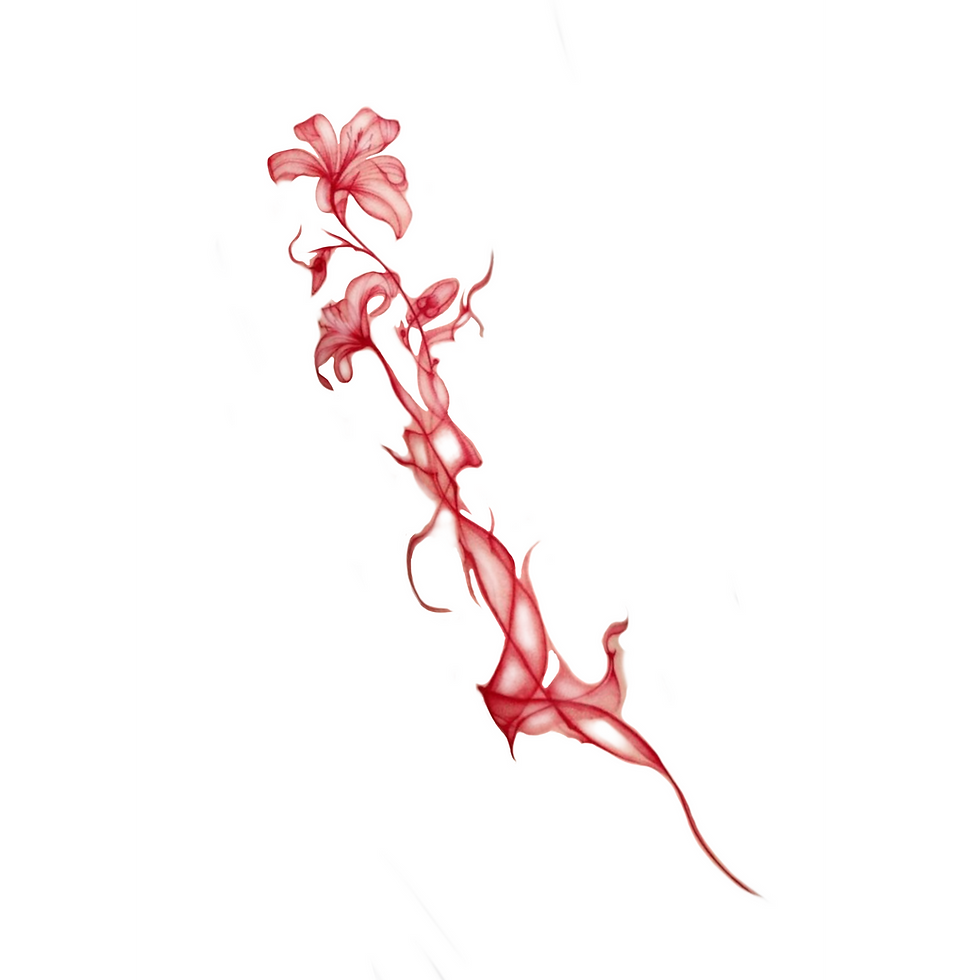Residential segregation remains one of the most enduring and invisible forms of systemic inequality. Rooted in policies like redlining, it dictates who gets access to clean air, quality education, public safety, and generational wealth; it is based not on merit, but on race and class. These borders are not drawn with fences, but with laws, zoning codes, and decades of strategic exclusion, shaping where we grow, how we live, and what we are allowed to imagine for ourselves.
This tattoo depicts a translucent red flower—delicate yet unnatural, blooming in liminal space. The red hue is not simply aesthetic; it symbolizes the practice of redlining itself, where maps were shaded in red to mark “undesirable” neighborhoods, systematically depriving them of investment and opportunity. The translucency of the petals suggests a haunting visibility: the way segregation is all around us, yet rarely named outright.
Though it may appear to be flourishing, the flower is isolated, suspended—its roots unseen, its growth constrained. It stands for communities forced to bloom in confined, overlooked spaces. The natural beauty of the flower contrasts with the unnatural conditions it symbolizes, evoking both resilience and grief. Its fragility is not weakness—it is testimony.
This piece reminds us that segregation is not a relic of the past, but a quiet architecture of injustice that still shapes our present. To dismantle it, we must first recognize the beauty and potential that has been stifled. We owe it to every uprooted bloom to redraw the map—together.
Residential Segregation
Small (10 cm x 2.5 cm)
- Scalene
- Clavicle
Medium (16 cm x 4 cm)
- Forearm
- Bicep
Large (30 cm x 7.5 cm)
- Side of the Waist (vertically)
- Trapezius to Tricep
- Lower Hip to Upper Thigh


